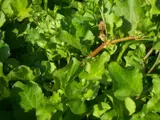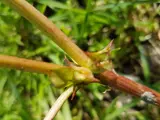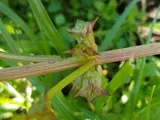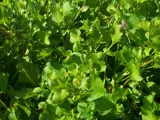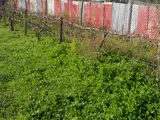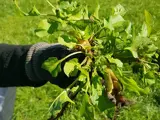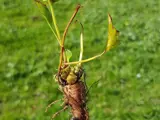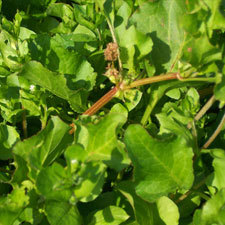 Spiny emex
Spiny emex
Common name: Spiny emex
Botanical name: Emex australis
Management programme: Progressive Containment
Spiny emex is native to southern Africa. This plant is a major pest in parts of Australia where it is commonly called ‘doublegee’. The new leaves of the plant are edible and recorded as tasting similar to spinach. It is thought to have been brought to New Zealand in fodder imported from Australia in 1883.
Why is it a pest?
- If present in pasture, the seeds can ulcerate mouths, puncture gut linings and cause ill health in animals that graze it. This can result in the animal having poor milk production, calving ability and general well-being.
- Seeds have three strong spikes that hitch rides on machinery tyres, footwear and animals hooves and coats, spreading them around effectively. If embedded in hooves, it will eventually cause lameness in the animal.
- The seeds can become entangled in wool, affecting the end result for production.
- Health hazard to people as the spikes can break off in the skin and cause infection if not removed. Also quite painful if you have the misfortune to step on or grab a burr.
- Decreases available pasture for grazing.
- Contaminates crops and hay.
- Can make areas unusable for recreational or commercial activities.
- Seeds can live up to eight years in the soil.
Where is it found?
Only found in Maketū within the Bay of Plenty region. It likes the sandy soil of coastal areas but can adapt to a variety of soil types. Can be found in backyards, pasture and areas where soil has been disturbed.
What does it look like?
- Looks similar to dock plants, except the stems are red and the leaves curl on the edges.
- Plants can grow up to 1m high but can also grow along the ground, fanning out from the centre tap root.
- Flowers are very small clusters and pale green-white in colour. They appear in autumn.
- Seeds are encased in a light green, rubbery case when young and turn brown and harden as they mature.
- Seeds appear early winter and grow at the base of stems and leaves. They are unique in appearance as you feel them before you see them! The three-spiked seed casing feels like a sharp, hot needle.
- Dies back over summer months but can regenerate with high rainfall occurrences.
What are the rules?
Progressive Containment
Progressive Containment species are pests which the council aims to prevent from spreading, reduce the distribution, or eradicate within parts of the region over time. Landowners or occupiers are responsible for the control of Progressive Containment species on their property. Council may enforce the control of these pest species.
Note: Council will maintain control and management of wallaby, African feather grass, Asiatic knotweed, alligator weed, feral goats and yellow flag iris. These pests are high risk but will not meet the eradication objective, and do not lend themselves to occupier control responsibilities.
How do you get rid of it?
Control of spiny emex should be done when the plant isn’t in seed. This will help to reduce the seed bank over time.
- Can dig or grub the plant.
- Foliar spray – either knapsack, gun and hose or boom - with dockstar.
Continue controlling the plants until the seed bank is exhausted. Sow thick/dense pasture or plantings in place of where plants once where to discourage new growth. All plant and root material should be disposed of at a refuse station in general waste.
CAUTION: When using any herbicide or pesticide, PLEASE READ THE LABEL THOROUGHLY to ensure that all instructions and directions for the purchase, use and storage of the product, are followed and adhered to.
Read more on pest control advice, information and regulations
Images

